Search Results
Fine Jewelry University Articles matching: “Gold stamped s”
Showing only FJU Article results. Click here to show all results.
Fine Jewelry University (Show All FJU Articles)
-
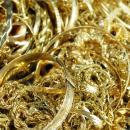
Gold Purity and The Differences Between White and Yellow Gold
… non gold metal. Some plated jewelry has markings that look like real solid gold. For example, a plated piece can be stamped: 14k HGE or 18k GE. HGE means hydrostatic gold electroplating. Plated gold is measured in how many molecules of gold… jewelry has very little gold. You can learn more about gold plating on our FAQ page. Sometimes engagement rings are stamped 14KP. The 14KP is a marking for plum gold which is a true mix of 14 karat gold. Some governments allow 13.5k to be …
-
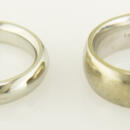
The Difference Between White Gold and Platinum
The first difference between white gold and platinum is the most basic and is the foundation of all the other differences. White gold and platinum are … is itself a white metal. White gold and platinum have their own properties that make them unique. How is white gold made? White gold is an alloy of gold and some white metals such as silver, nickel or palladium. The white color is … a careful choice of the alloying metals, which bleach the deep yellow of pure gold. The amount of alloy mixed with gold is called its karat. The key to understanding gold karat is the karat value over 24. An example is a 14-karat gold …
-
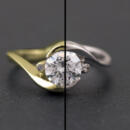
Star White Gold
How white is your white gold? Style, fashion, and beauty are all reasons to choose white gold. White gold compliments diamonds. White gold is …, not all gas is created equally. We have all had the experience of poor performance due to poorly made gas. White gold also has three grades. Grade 3 is off white, grade 2 is standard, and grade 1 is premium. This means that when white … shares many of the properties of platinum including its white color. The rhodium plating is used to make the white gold look whiter. The natural color of the white gold could actually be a light yellow color. The rhodium is very white …
-
Measuring Gold Weight
The old riddle goes: what weighs more a pound of feathers or a pound of gold? Some say gold because it is heavier. Others say they are both a pound so they weigh the same. Both are wrong. How …Tradition. Gold is not weighed in the ordinary weights. Gold is weighed in the troy measurement system. One ounce of gold is not the same as the ordinary ounce (really called avoirdupois ounce). The best way to understand this is to …. An avoirdupois ounce converts to 28.34 grams approximately. The troy ounce is 31.1 approximately. You say, “Aha! Gold weigh more, so a pound of gold weighs more than a pound of feathers.” Unfortunately there is one more piece of the …
-
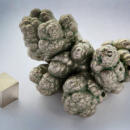
What to Do When Your Ring Irritates Your Skin
… or green when they wear certain jewelry. One of the most common metal allergies is Nickel which is added to pure gold in many white gold alloys. The Nickel is what makes the gold white, but it can also cause an allergic reaction. Some … the exact cause and solution of an allergic reaction is not as simple as it may seem. Jewelry, especially white gold, is often plated to give it a brighter finish. White gold alloys are often plated with Rhodium which is a member of the …
-
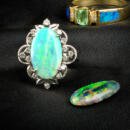
Gem in the Spotlight: Opal
Opal has been described as containing the wonders of the skies, sparkling rainbows, fireworks, and lightning. Its dazzling … is totally unique in the gem world, and the lore that surrounds it is almost as colorful as the gem itself. Opal is the traditional birthstone for those lucky enough to born in October, and it is found in a huge variety of colors (… all within the same stone). Gemology of Opal Opal’s captivating dance of colors is a result of its unique internal structure. This gemstone is composed of tiny silica spheres arranged in a pattern, which diffract light and create the …
-
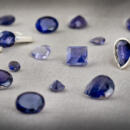
Gem in the Spotlight: Iolite
Iolite is maybe not the first gemstone people think of for their blue-violet jewelry, but it should be near the top of the …’s color range of blue, blue-violet, and violet competes for public attention with sapphire, tanzanite, and amethyst. They may have name recognition, but iolite has a rich, unique color and great gem value on its side. It is more … and deeper than many tanzanites. Iolite’s name comes from its violet color. It is from the Greek word “ios” meaning violet. Unlike many other popular gems, iolite cannot be heat treated to enhance its color. The color you see is the …
-
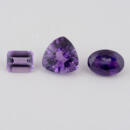
Gem in the Spotlight: Amethyst
Amethyst is known for its beautiful purple color, and it is the most important quartz variety used in jewelry. Purple has … a royal color, so it is not surprising that amethyst has been in so much demand throughout history. Gemology Amethyst is a variety of quartz that is colored by the presence iron and aluminum. The violet color of amethyst can range …and it is often found in shades of pale to medium purple. Amethyst is typically found in Brazil, Uruguay, and Madagascar, but it can also be found in smaller deposits in other countries such as Russia, the United States, and Canada. …
-
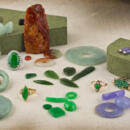
Gem in the Spotlight: Jade
Jade has one of the richest heritages of all gemstones. People have been using jade from as early as 6,000 BC, and it has … important part of Asian, Central American, and North American history ever since. But, what is jade, and what has given it such a prominent place in human history? The term “jade” actually refers to two completely different gems: … and jadeite. These are actually two unique mineral species, but since they have been confused for so many years, and are similar in many ways, they are both referred to by the blanket term “jade”. Both materials are silicates that …